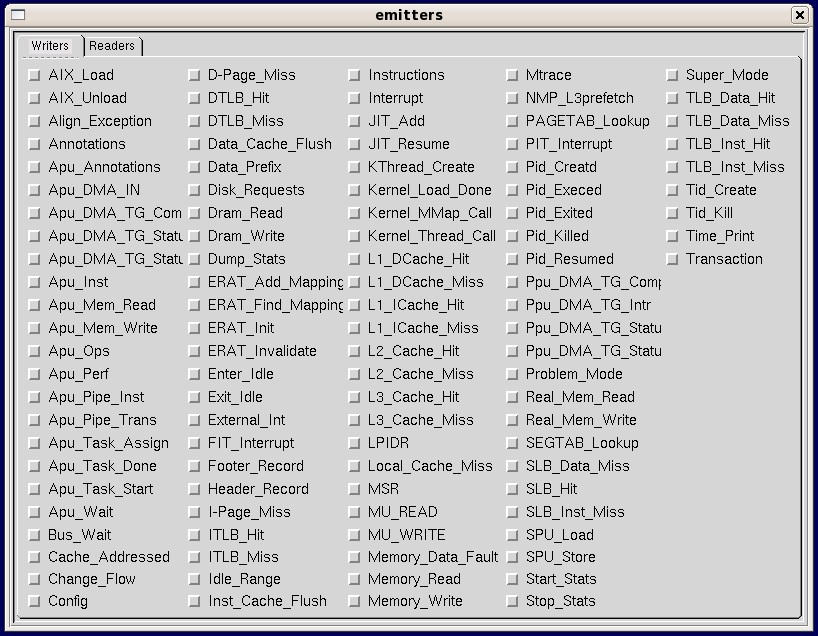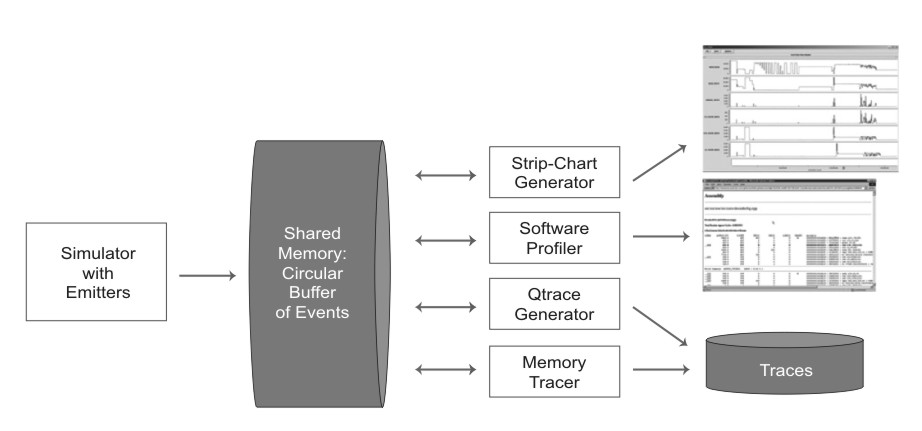In addition to the basic cycle-count and summary statistics provided by its profile checkpoints and triggers, the simulator also supports a user-extensible event-analysis system, called emitters.
- Event Data Production — During simulation, the simulator can identify a wide variety of architectural and programmatic events that influence system and software performance. Using configuration commands, you can request the simulator to emit records for a specific set of events into a circular, shared memory buffer. Reader programs attach to the shared memory buffer to consume these event records. Examples of emitter events include instruction execution, memory-reference addresses, and cache hits and misses.
- Event Processing — There are one or more readers that analyze event records from this buffer. The readers typically compute performance measurements and statistics, visualize system and application behavior, and capture traces for post-processing. The simulator is prepackaged with a set of prebuilt sample emitter readers, and users can develop and customize their own emitter readers.
Figure 1 shows the emitter selections available by clicking the Emitters button on the GUI screen.
Figure 2 shows the emitter architecture. Emitters can be used in any simulator mode. The writer toggle buttons in the GUI are used to enable or disable production of the associated event to the circular buffer. An emitter reader program is needed to receive the events from the circular buffer using the emitter reader API.
The emitter framework is meant for programmers who wish to conduct performance analyses or capture traces by developing custom reader programs.
/opt/ibm/systemsim-cell/include/emitter/emitter_data_t.h
- Begin/end markers (Header, Footer)
- PPU and SPU instructions
- Cache hits or misses
- Process/thread state (create, resume, kill, and so forth)
- Translation Lookaside Buffer (TLB), Segment Lookaside Buffer (SLB), Effective-to-Real Address Translation (ERAT) operations
- Device operations (disk)
- Annotations
- Transactions

